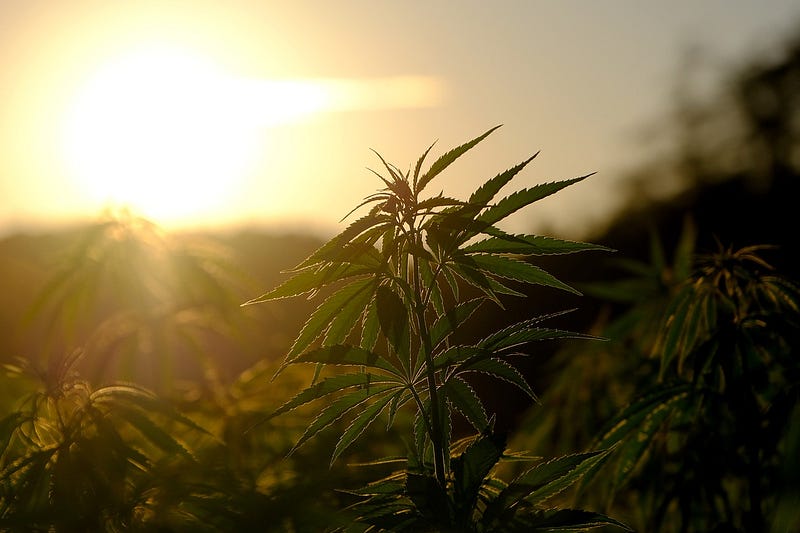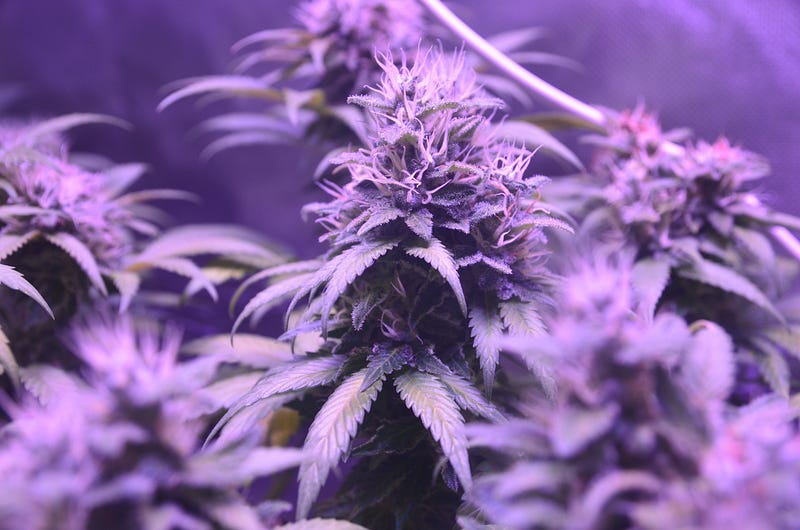Understanding Cannabis: The Importance of the Entourage Effect
Written on

The entourage effect refers to the concept that the various compounds in the cannabis plant work together synergistically, providing greater benefits than using a single compound alone. This means that full-spectrum products, which include a range of cannabinoids and other cannabis compounds, often prove to be more effective than products containing only THC or CBD. This perspective challenges the common belief that higher THC levels equate to stronger effects. In reality, products rich in a diverse array of cannabinoids, terpenes, and flavonoids typically yield the best results.
Disclaimer: I am not a medical professional, and this article should not be considered medical advice. Always consult a healthcare provider for medical concerns. The information presented here is based on my experience in the cannabis industry and current research. Cannabis legality varies by location; please verify local regulations.
What Comprises a Cannabis Plant?
The Cannabis Sativa plant contains over 500 compounds, many of which are bioactive and may offer therapeutic benefits. The unique and varied effects associated with cannabis arise from the interplay of these compounds. Cannabinoids initiate the interaction with our endocannabinoid system by binding to CB1 and CB2 receptors, but other elements also contribute to the entourage effect.
Cannabinoids
Cannabinoids are naturally occurring substances in the Cannabis Sativa plant. While over 50 cannabinoids have been identified, a few are more prevalent, with THC and CBD being the most recognized. Other notable cannabinoids include CBG, CBC, and CBN. These compounds interact with our endocannabinoid system, which consists of neural receptors distributed throughout the body, playing a role in maintaining balance and triggering unique cannabis effects.
Common Cannabinoids Include: 1. THC – The cannabinoid that most individuals are familiar with, THC is responsible for the euphoric “high” associated with cannabis as it binds primarily to CB1 receptors in the brain and spinal cord. 2. CBD – The second most popular cannabinoid, CBD is non-intoxicating and interacts with CB2 receptors throughout the body, influencing mood, anxiety, immune responses, and cardiovascular health. 3. CBG – Often referred to as the "mother of all cannabinoids," CBG serves as a precursor to other cannabinoids. It is typically found in higher concentrations in younger cannabis plants and may assist with anxiety and inflammation. 4. CBN – This cannabinoid interacts with both CB1 and CB2 receptors but has a higher affinity for CB2. While generally non-intoxicating, CBN can induce mild sedation at elevated doses and is beneficial for promoting healthy sleep patterns.
Terpenes

Terpenes are aromatic compounds found in many plant species, including cannabis. They serve various roles in nature, such as attracting pollinators or deterring herbivores, and they also help plants withstand environmental stressors. In cannabis, terpenes contribute to the plant's scent and flavor profile, which can significantly influence its effects on users.
Common Terpenes Include: 1. Myrcene – The most prevalent terpene in cannabis, also found in mangoes and hops, myrcene is believed to offer heart protection and is often associated with relaxing effects. 2. Caryophyllene – Found in black pepper and cinnamon, this terpene is unique as it also acts as a cannabinoid, binding to CB2 receptors and providing anti-inflammatory and pain relief benefits. 3. Pinene – Present in pine trees and basil, pinene may aid those with asthma due to its bronchodilator properties and is known to enhance focus and mood. 4. Limonene – Commonly found in citrus fruits, limonene is known for its mood-lifting properties and may aid digestion and combat inflammation. 5. Terpinolene – This terpene has a pleasant scent and may provide calming effects; when combined with THC, it often promotes energy and focus.
Cannabis exhibits significant variability and affects individuals differently due to each person's unique endocannabinoid system. Exploring various cannabinoid and terpene combinations can help you identify what works best for you.
Flavonoids

Flavonoids are bioactive compounds primarily responsible for the colors of cannabis plants. While not exclusive to cannabis, certain "cannaflavins" have only been identified in this plant. Preliminary research indicates that flavonoids may also play a role in the entourage effect, exhibiting anti-inflammatory properties that could alleviate pain.
Flavonoid composition can vary based on multiple factors, including temperature. While many cannabis strains are green, some display vibrant purple hues when exposed to cooler conditions, simulating autumn weather.
Flavorants
Flavorants are compounds in cannabis that significantly contribute to its aroma. This category includes esters, alcohols, and newly identified volatile sulfur compounds. Previously thought to be primarily responsible for cannabis scents, flavorants have recently been recognized for their substantial impact. A study by Abstrax Labs highlighted that flavorants, in addition to terpenes, are crucial to cannabis's aromatic profile (Oswald, Paryani, 2023).
Volatile sulfur compounds (VSCs) are linked to tropical and fruity aromas in strains like mimosa and grape pie. Conversely, Indole and Skatole contribute to savory or skunky scents found in strains like GMO and Kimbo Kush. Further research is needed to understand the specific effects of these compounds, but their aromas likely have bioactive effects on users.
The Entourage Effect and Selecting the Right Product
While THC and CBD are key players in engaging our endocannabinoid system, the entourage effect accounts for the nuanced differences in cannabis effects. The chemistry of cannabis is intricate, with the whole often being greater than the sum of its parts. Many consumers focus solely on THC levels when selecting products, yet this metric alone does not guarantee quality.
Increasing research supports that full-spectrum products, which offer a diverse chemical profile, tend to be more effective than those with a single cannabinoid. For instance, an 85% THC full-spectrum oil containing minor cannabinoids and terpenes is likely more effective than a 95% THC distillate, offering enhanced therapeutic benefits. My experience also indicates that single-compound products may lead to adverse effects like paranoia.
Look for natural products that retain the full chemical profile of the cannabis plant. Options like whole flower and full-spectrum extracts, such as rosin, are preferable to distillates as they preserve the plant's original chemical makeup. If possible, use your sense of smell when selecting products; being drawn to a specific strain's scent can indicate that you may enjoy its effects.
Typically, only cannabinoid and terpene content is displayed on product packaging. Aim for products with varied cannabinoid profiles and high terpene levels, ideally above 2%. High terpene content typically signifies a quality product. Whether you're choosing flower or concentrate, options with diverse compounds will yield superior results.
A recent study by Zentrela and PAX demonstrated that full-spectrum rosin resulted in greater psychoactivity and longer-lasting effects compared to THC-only distillates (Bosnyak, Rufer, 2005). Though specific terpenes were not targeted, this research reinforces the notion that the entourage effect surpasses the pursuit of the highest THC content.
Conclusion
As research progresses, our understanding of cannabis effects continues to evolve. There is still much to learn about this plant, but recognizing the entourage effect is a significant step toward grasping how various compounds interact with the human body. It is clear that a combination of cannabinoids, terpenes, and other compounds contributes to the overall effects of cannabis, rather than relying solely on THC or CBD.